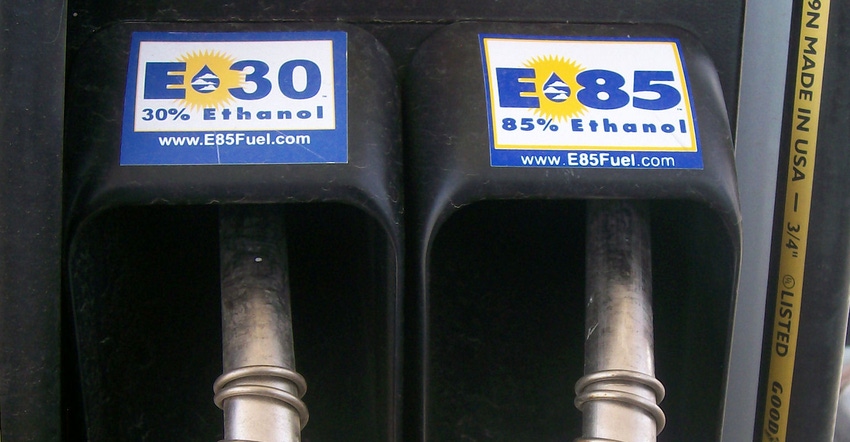DOE data show ethanol use exceeded 10% of gasoline use in more than 25 states.

Recent data from the U.S. Department of Energy show that gasoline consumed in 25 states and Washington, D.C., contained more than 10% ethanol (E10), on average, in 2015, "demonstrating that the so-called 'E10 blend wall' continues to crumble," the Renewable Fuels Assn. (RFA) said.
In a statement, RFA said the national average ethanol blending rate was 9.91%. RFA said this level "completely undermines" legislation proposed in the last Congress by Renewable Fuel Standard (RFS) critics, Reps. Bill Flores (R., Texas) and Peter Welch (D., Vt.), that suggested that the gasoline market cannot withstand more than 9.7% ethanol content.
The data show that ethanol comprised 12.5% of the gasoline pool in Minnesota in 2015, and not coincidentally, ethanol flex fuels like E85 are available at roughly one out of every eight stations in the state. In Iowa, RFA said the DOE data that show gasoline contained an average of 11.5% ethanol in 2015, up from 10.3% in 2014 and 9.5% in 2013.
The numbers are likely to be higher today, RFA said, pointing out that the 2015 data are the latest available and were just published by DOE's Energy Information Administration.
Ethanol also exceeded 10% of gasoline consumption in 2015 in coastal states like California, Oregon, New Jersey, Massachusetts, Connecticut and even Louisiana.
For the first time ever, not a single state had average ethanol content below 9% in 2015, according to DOE. Vermont ranked last in average ethanol concentration, at 9.18%.
In 2014, the national average ethanol content was 9.83%, and 22 states (plus Washington, D.C.) were above 10%, on average.
RFA president and chief executive officer Bob Dinneen said the DOE data underscores that the RFS is working as intended to drive increased use of ethanol and other biofuels.
"As E15 and ethanol flex fuels like E85 have gained in popularity in recent years, the so-called blend wall has been reduced to a pile of rubble," Dinneen said. "This data clearly show that the RFS is delivering on its promise to expand consumer access to lower-cost, cleaner fuel options at the pump."
EPA just recently finalized its RFS biofuel blending targets to their full statutory levels after two years at levels lower that those authorized in the 2007 Energy Independence & Security Act.
"With EPA putting the RFS back on track in 2017, the share of renewables in our nation's motor fuel will only continue to grow," Dinneen said.
About the Author(s)
You May Also Like




.png?width=300&auto=webp&quality=80&disable=upscale)
